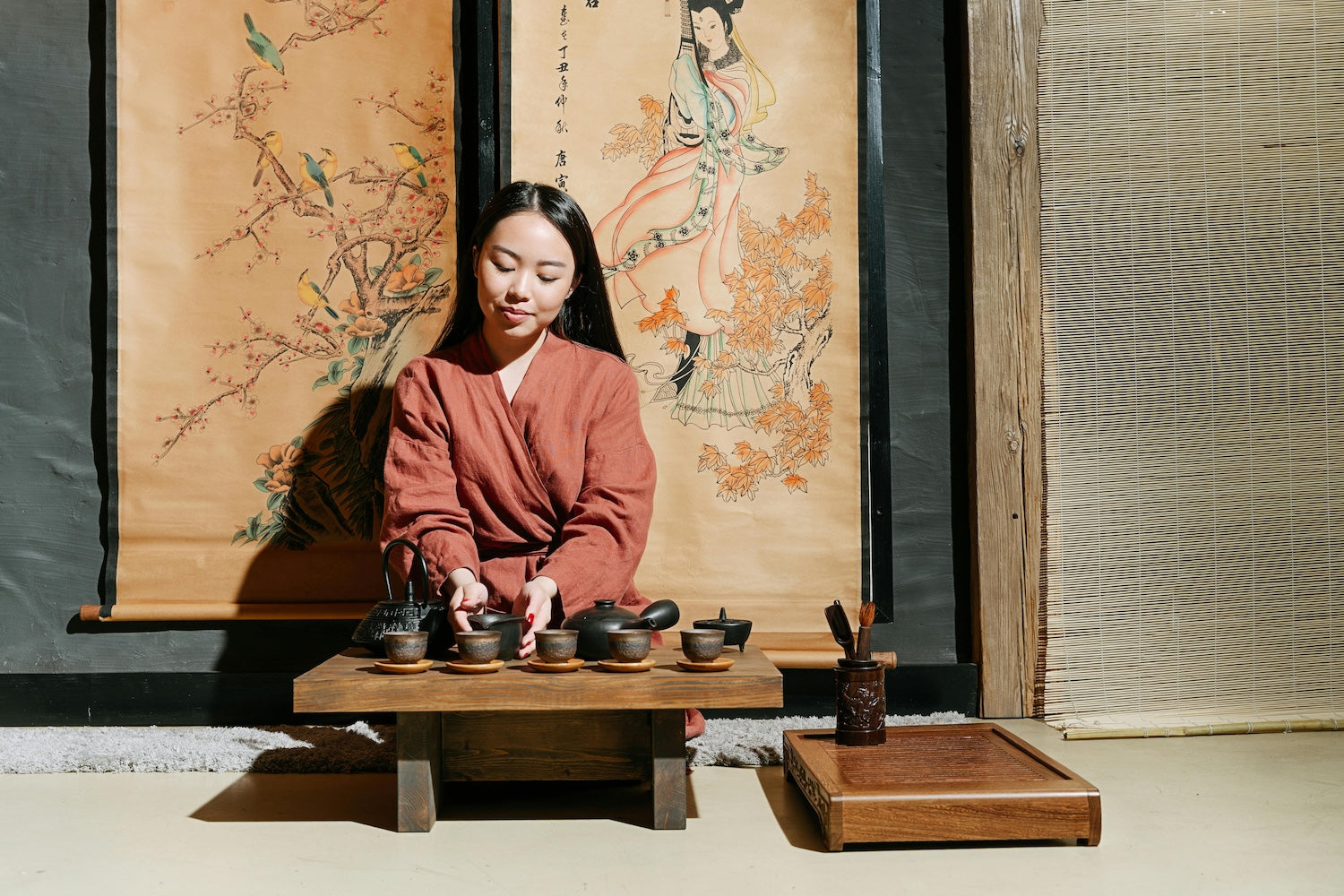
The History of Tea: A Millennial Tradition
The Legendary Origins of Tea
The history of tea begins in the mists of time and is surrounded by fascinating legends. In China, in 2737 BCE, Emperor Shennong, considered a pioneer of medicine, is said to have discovered tea by chance. While he was boiling water under a tree, a few leaves came loose and fell into his container. Intrigued by the color and aroma, he tasted the decoction and was immediately won over by its virtues.
In India, a legend tells that Prince Dharma, who went on a pilgrimage to spread Buddhist teachings in China, pledged not to sleep for nine years. Around the third year, exhausted, he chewed leaves from a wild tea plant, which allowed him to stay awake to complete his mission.
In Japan, the legend of Bodhi-Dharma adds a dramatic touch: after falling asleep during his meditations, he cut off his eyelids out of remorse. From these eyelids thrown to the ground an unknown shrub, the tea plant, whose leaves had the power to keep one awake, was born.
The Evolution of Tea in China
China is undoubtedly the birthplace of tea. During the Tang Dynasty (618-907), tea went from being a pharmacopoeia to a refined daily consumption. It was at this time that Lu Yu, considered the "sage of tea", wrote the Cha Jing (The Classic of Tea), a work that codified the preparation and the art of tasting this drink.
Under the Song dynasty (960-1279), the tea ceremony was enriched and heralded the Japanese Cha No Yu, while loose teas appeared, making consumption more accessible. The Ming dynasty (1368-1644) marked a revolution with the abandonment of compressed bricks in favor of infused leaves, a practice that had a lasting influence on the accessories linked to the preparation, such as porcelain teapots.
The Expansion of Tea in Japan
Tea arrived in Japan in the 7th century, introduced by Buddhist monks returning from China. It was not until the 15th century, under the influence of the tea master Sen No Rikyû, that tea became an art of living in its own right. His simple philosophy, centered on serenity and respect for everyday gestures, deeply marked the Japanese tea ceremony, called chanoyu.
The Discovery of Tea by Europe
Europe discovered tea in the 17th century thanks to the sea routes opened by the East India Companies. In 1606, the first shipments of tea arrived in Amsterdam. Shortly after, the coffee houses of London introduced this exotic drink, quickly becoming associated with the elite. Despite a tax imposed by Cromwell, which encouraged smuggling, tea became a cultural pillar, particularly in England where it was crowned the national drink in the 18th century.
In France, tea conquered aristocratic circles. Personalities such as Madame de Sévigné and Racine participated in popularizing this drink, often consumed with milk.
Tea in the New World
Tea plays a key role in American history with the famous Boston Tea Party of 1773. In protest against taxes imposed by the British Crown, colonists dumped cargoes of tea into Boston Harbor, sparking the American Revolution.
Tea and Global Expansion
Faced with growing demand, the English developed plantations in their colonies. India became a major player in production from the 1830s, followed by Ceylon (Sri Lanka) after the destruction of the coffee plantations. Tea also became established in Africa, South America and on certain islands such as Réunion.
Tea Today
The second most consumed beverage in the world after water, tea spans cultures and centuries. Each cup tells a story, reflecting a unique blend of traditions, legends and cultural exchanges. Today, more than 15,000 cups are drunk every second across the globe, uniting people around a timeless ritual.
The sections should be enriched with historical illustrations, maps showing tea trade routes, and specific anecdotes related to each culture.